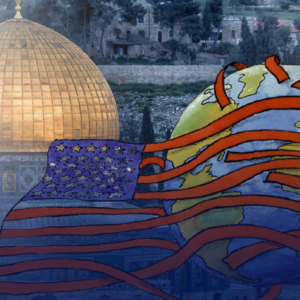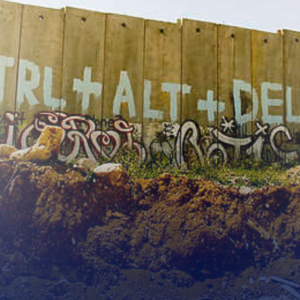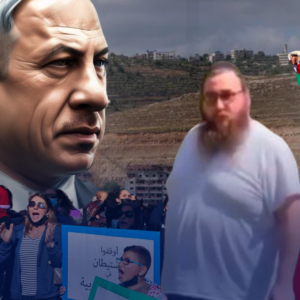How Colonialism Weaponized the Hijab
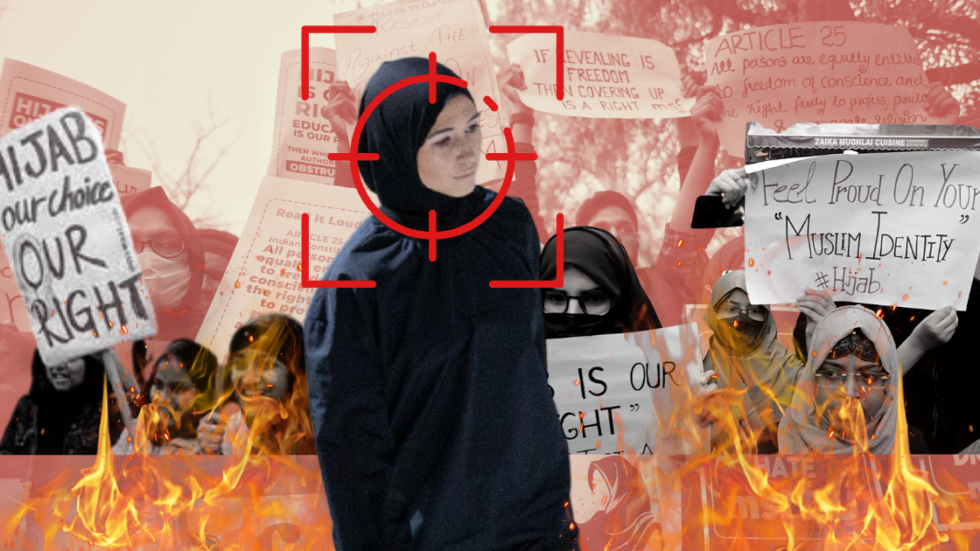
How Colonialism Weaponized the Hijab
Mainstream media celebrates the burning of hijab, champions only those who remove the veil and promotes the desecration of Islamic sanctities. But what if there is something sinister about the politicization of the veil, heightened media obsession of the hijab post Mahsa Amini’s death in Iran, and the broader colonialist agenda.

How Colonialism Weaponized the Hijab
Mainstream media celebrates the burning of hijab, champions only those who remove the veil and promotes the desecration of Islamic sanctities. But what if there is something sinister about the politicization of the veil, heightened media obsession of the hijab post Mahsa Amini’s death in Iran, and the broader colonialist agenda.
Writer: Fiza Raza | Copy Editor & Host: Zainabrights | Producer: Fatima El-Zein
Over the years, the Muslim woman and her veil have been the target of a comprehensive, holistic attack by the media, especially following the Mahsa Amini campaign in Iran last September. Fake accounts were created on social media platforms like Twitter to make the hashtag Mahsa Amini go viral in attempts to promote the anti-hijab propaganda and support the removal of mandatory hijab dress code in Iran. This media campaign was used by the Western governments to push the regime change agenda in Iran. For the Western Muslims, the result of this anti-hijab propaganda was a rise in Islamophobic attacks, where Muslims had little to nothing to do with the events abroad.
In light of these recent events, it becomes necessary to critically examine the role of the media in weaponizing the hijab for ulterior purposes, and more importantly, why its removal is important to colonial powers.
Media Propaganda Against Hijab: A Dangerous One-Sided Narrative
Hijab has always been depicted in media as a form of cruel oppression and a hindrance to progress; the veiled Muslim woman is usually portrayed as a weak and powerless individual in dire need of liberation from a barbaric, misogynistic society.

According to a 2017 study in which thirty-five years of data from the New York Times and Washington Post was examined, Muslim and Middle Eastern women have higher chances of receiving coverage in the US mainstream media when their rights are violated, with themes of gender equality and women’s rights violations receiving greater attention. In contrast, the US media is more likely to report on women from other countries when their rights are respected.
A similar pattern is evident in TV shows, with Islam and Muslims being consistently associated with negative themes such as terrorism, violence, and oppression against women. The results of a recent study that analyzed around 200 popular episodic TV shows reveal the significant degree of underrepresentation, misrepresentation, and stereotyping that targets Muslims, especially Muslim women, in the mainstream media. While Muslims make up 25% of the world’s total population, only 1% of the characters in the TV series studied were Muslims and only 30.6% of the Muslim characters were females. In addition, Muslims were not featured in a staggering 87% of the shows analyzed. To exacerbate the situation, most Muslim characters that do appear on screen are either racially profiled, depicted as ‘foreigners’, linked to violence, or engaged in criminal activities.
A more stereotypical presentation of Muslim women was rampant across these shows, according to the results of this study. Most female Muslim characters were consistently portrayed as vulnerable, fearful, and imperiled due to the emotional and physical distress they were facing, mainly due to the opposite sex. In contrast, their non-Muslim counterparts were almost always shown as assertive, strong, and capable of saving themselves in dangerous situations.
The removal of hijab, on the other hand, is consistently synonymized with freedom, empowerment, and advancement in the media. The coverage of the Mahsa Amini campaign in Iran by the Western mainstream media provides a clear, most recent example of this misleading association.
The anti-hijab Mahsa Amini protests were called, among other deceptive labels, the Iranian people’s ‘demands for freedom’ and their ‘fight for rights.’ Whereas the number of protesters during Mahsa Amini protests did not exceed a hundred thousand, the representation of the scale of anti-hijab sentiments among Iranians was exaggerated using titles such as ‘woman-led revolution’ and ‘uprising.’ In contrast, millions of Iranians rallying in support of the Islamic Republic every year receive almost zero coverage in mainstream media.
Furthermore, the established mindset in Western media and society is that hijab is a serious hindrance to progress and advancement. If a woman wants to attain higher levels of social, political, or academic achievements, she must remove her hijab, and only through putting aside her moral and ethical values can she be ‘free’ and successfully ‘move forward’ in wider society.
The media constantly presents countries like Iran, where the hijab was mandated as the public dress code after the 1979 Islamic revolution, as oppressive, misogynistic, and backwards. In contrast, the Pahlavi-era pre-revolution Iran is often portrayed as a wonderful ‘thriving’ society.
However, a quick look at the pre and post-revolution statistics in Iran reveals how the media is deviously perpetuating a one-sided anti-hijab narrative through equating freedom and progress with a less covered appearance. In 1976, the total literacy rate for adults in Iran was only 37%, whereas in 2021, it has risen to 89%. In addition, females make up a total of 60% of Iran’s university students. In 1979, the number of female doctors in Iran was only 3,500. This figure has risen to 66,000 today. In fact, the number of female doctors in Iran is higher than male doctors.
This pervasive anti-hijab bias in the media is dangerous and problematic, as the positive associations that Muslim women have with hijab are never showcased, or, in the case of Iran, the voices of the majority go completely unheard. The result is a widespread disdain for hijab in the public opinion and the ostracization of Muslim women in the society because people are not receiving a balanced, unbiased perspective on the issue. This largely puts the onus on the Muslim women, who are already bearing the brunt of Islamophobic discrimination and harassment, to appease others and defend their choices to wear the hijab.
Whereas the media constantly promotes the idea that women should have freedom in deciding what to wear, controversial hijab bans in countries like France and India receive little to no attention, and the media takes a contradictory approach in covering hijab-related issues. Similarly, in secular countries which are supposedly meant to allow freedom of expression and religion, veiled Muslim women are often victims of unprovoked verbal and physical abuse because of their appearance.
Whereas the media constantly promotes the idea that women should have freedom in deciding what to wear, controversial hijab bans in countries like France and India receive little to no attention, and the media takes a contradictory approach in covering hijab-related issues. Similarly, in secular countries which are supposedly meant to allow freedom of expression and religion, veiled Muslim women are often victims of unprovoked verbal and physical abuse because of their appearance.
They have their hijabs snatched and pulled off their heads, and often told to go back to their country. They are sidelined and refused opportunities in athletics. Women with hijab also have lesser chances of being hired in Western countries.
The Significance of Hijab in Islam
With an unprecedented propaganda campaign targeting hijab in the media, it is necessary to examine the importance of hijab for Muslim women.
Hijab is an obligation in Islam, just like prayers and fasting, and the observation of hijab for Muslim women is an act of utmost devotion and submission to God. From an Islamic perspective, a flourishing society is a place where individuals engage in constructive activities instead of unrestrained sexual enjoyment. Islam views both men and women as ‘human beings’ on a societal level and confines their sexual dimension to the family environment. Therefore, Islam introduces laws for both men and women, such as guarding one’s gaze, that need to be followed by all individuals.
This has several significant outcomes. Observing the hijab, by both sexes, upholds the sexual tension between the spouses as one’s sexual desires are only fulfilled by his or her spouse within the family environment. A husband and wife become the reason behind each other’s wellbeing, leading to a perfect harmony between them. This contributes to strengthening the family structure. Islam views the family unit as the most important unit in a society and strongly believes that healthy families result in healthy societies that help individuals succeed in all arenas of their lives. There is a significant amount of research that indicates the negative impact broken families have on the development and prosperity of children.
With an unprecedented propaganda campaign targeting hijab in the media, it is necessary to examine the importance of hijab for Muslim women.
Hijab is an obligation in Islam, just like prayers and fasting, and the observation of hijab for Muslim women is an act of utmost devotion and submission to God. From an Islamic perspective, a flourishing society is a place where individuals engage in constructive activities instead of unrestrained sexual enjoyment. Islam views both men and women as ‘human beings’ on a societal level and confines their sexual dimension to the family environment. Therefore, Islam introduces laws for both men and women, such as guarding one’s gaze, that need to be followed by all individuals.
This has several significant outcomes. Observing the hijab, by both sexes, upholds the sexual tension between the spouses as one’s sexual desires are only fulfilled by his or her spouse within the family environment. A husband and wife become the reason behind each other’s wellbeing, leading to a perfect harmony between them. This contributes to strengthening the family structure. Islam views the family unit as the most important unit in a society and strongly believes that healthy families result in healthy societies that help individuals succeed in all arenas of their lives. There is a significant amount of research that indicates the negative impact broken families have on the development and prosperity of children.
Politicization and Weaponization of Hijab Post-Mahsa Amini Protests
With the media at the forefront of the massive anti-hijab campaign that began with the death of Mahsa Amini in Iran mid-September, the world witnessed an entirely new level of political manipulation and weaponization of the hijab.
On social media, bots and fake accounts–most of them created in just a few days following Mahsa Amini’s death–were employed in making the hashtag go viral and paint a distorted picture of Iran unrest.

A study conducted by Fars News revealed how five major anti-Iran news outlets headquartered in the West published 17,000 fake news over a period of only twenty-five days in attempts to spread misinformation regarding the unrest in Iran. These outlets included BBC Farsi, the Saudi-funded Iran International, VOA, Radio Farda and Manoto.
One person at the forefront of this anti-hijab battle is Masih Alinejad, an Iranian-American based in the United States. Between 2015 and 2022, the US Agency for Global Media paid Alinejad over $628,000 for her activities, which included instructing women living in Iran to produce videos in specified ways to push forward the anti-Iran and anti-hijab narrative. She regularly meets Western leaders in a bid to support sanctions on Iran, those that only hurt ordinary Iranian civilians.
The weaponization of hijab in propagating the anti-Iran narrative by the West to manufacture consent for sanctions and regime change in Iran is evident in the statements made by figures like Alinejad. Hijab is considered a symbol of Islam in Iran and Alinejad compares hijab to the Berlin Wall suggesting that the removal of the hijab mandate in Iran is tantamount to the fall of the Islamic Republic. In fact, BBC Farsi even admitted that hijab was just a pretext to instill unrest in Iran and the target was the Islamic Republic itself.
The Colonial Roots of the Weaponization of Hijab
The unveiling of the Muslim woman has been the political strategy of the colonial powers to subjugate other nations throughout history. The hijab is a powerful means for the Muslim woman to assert her Islamic identity and guard her culture’s traditions and values. In his book called A Dying Colonialism, Frantz Fanon writes, ‘a woman who sees without being seen, frustrates the colonizer.’
The colonial power must penetrate all the echelons of the colonized society, and the veiled Muslim woman prevents this from happening. The hijab presents a major barrier towards the colonization of a country and the assimilation of its citizens into the new, superior lifestyle of the colonizing entity. Therefore, an important step towards gaining complete control over a society is to remove the hijab of its women and destroy its values.
This was the ideological basis of the unveiling of the Algerian women by the French colonialism in Algeria. Maurice Viollette, the governor general of Algeria during the French colonial era, is reported to have said, “One cannot envisage the question of relations between Europeans and natives without devoting a special chapter to the native woman.”
The veiled native woman was considered a symbol of Algerian values, and her embracement of the ‘civilized’ French power’s values meant the success of the colonial project. The Algerian women’s veil and the colonizer’s inability to access what was hidden behind it was such an exasperation to the French photographers that they would pay the native Algerian women to remove the veil and pose for pictures to be used in postcards for satiating the gaze of Europeans abroad.
The unveiling project in Algeria by the colonial power did not stop here; unveiling ceremonies were held in 1958 across Algeria by the French army. Many Muslim women let the wives of French generals unveil them as a symbol of their liberation and assimilation into the French nation. This unveiling was symbolic of the fact that Algeria was accepting the transgression of its colonizer, because the unveiling is followed by the loss of the colonized nation’s traditions and values.
Even today, the veil is central to almost every political battle against Muslims and Islam. The defamation and destruction of the veil is a key step in the West’s attempts to colonize Islamic countries and impose Western dictates. Hence, the Muslim woman plays a significant role in resisting this cultural hegemony.
Writer: Fiza Raza | Copy Editor & Host: Zainabrights | Producer: Fatima El-Zein
If you value our journalism…
TMJ News is committed to remaining an independent, reader-funded news platform. A small donation from our valuable readers like you keeps us running so that we can keep our reporting open to all! We’ve launched a fundraising campaign to raise the $10,000 we need to meet our publishing costs this year, and it’d mean the world to us if you’d make a monthly or one-time donation to help. If you value what we publish and agree that our world needs alternative voices like ours in the media, please give what you can today.
